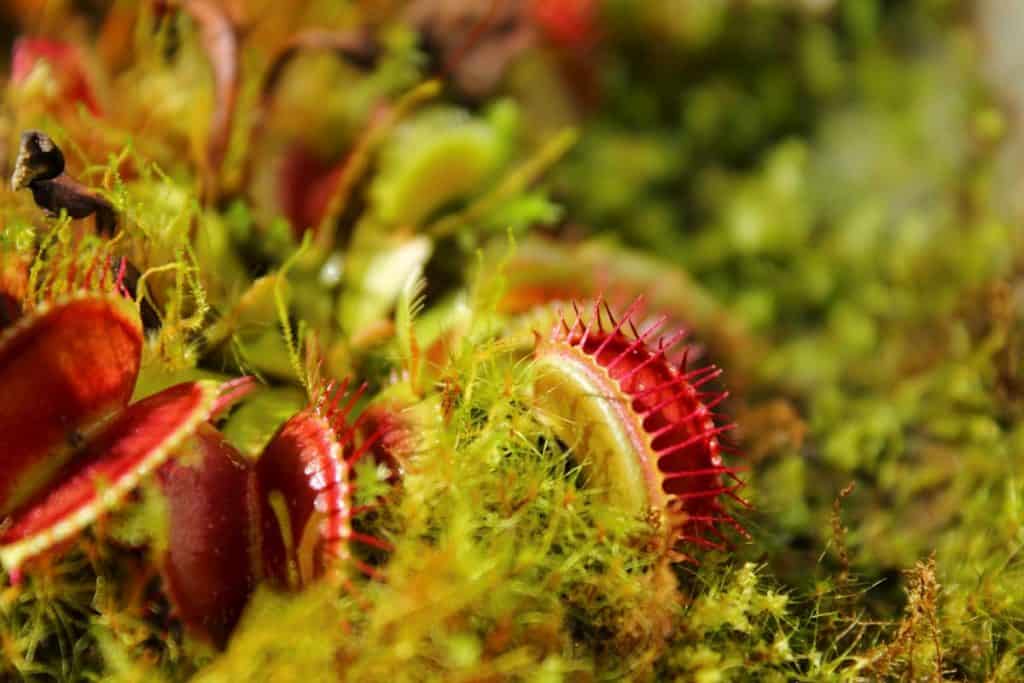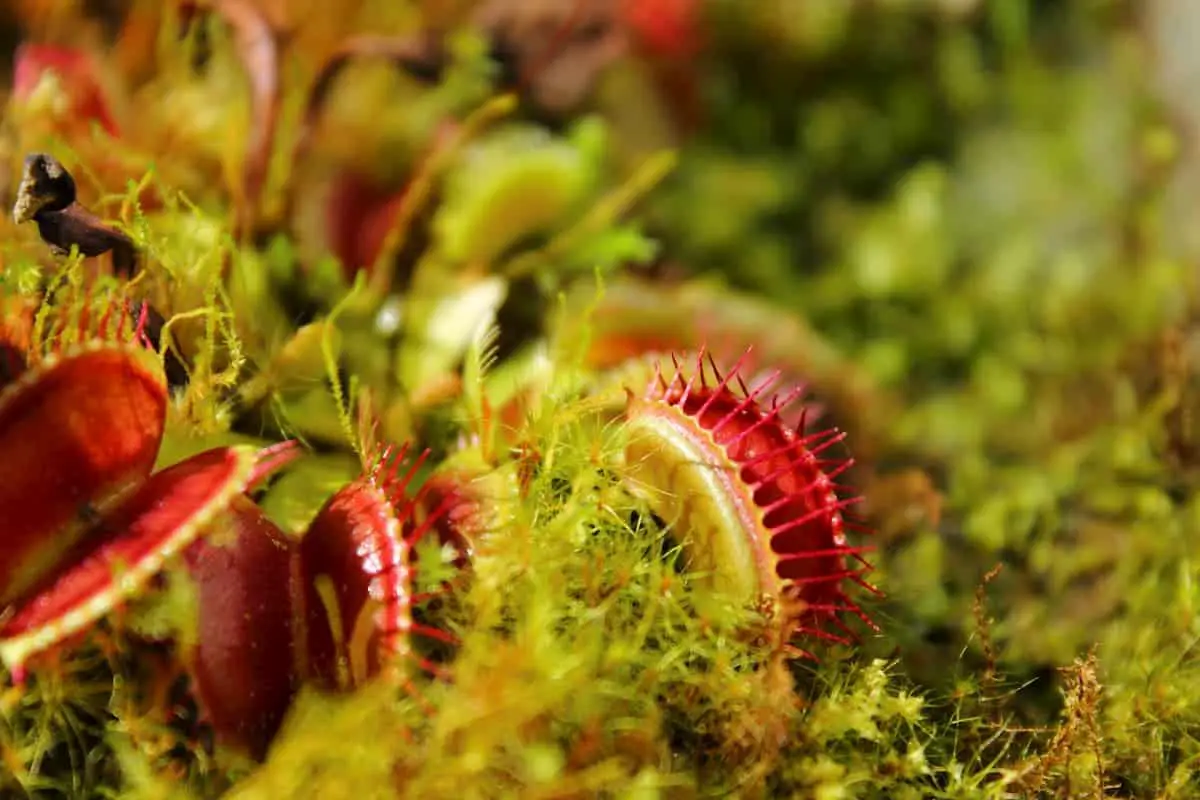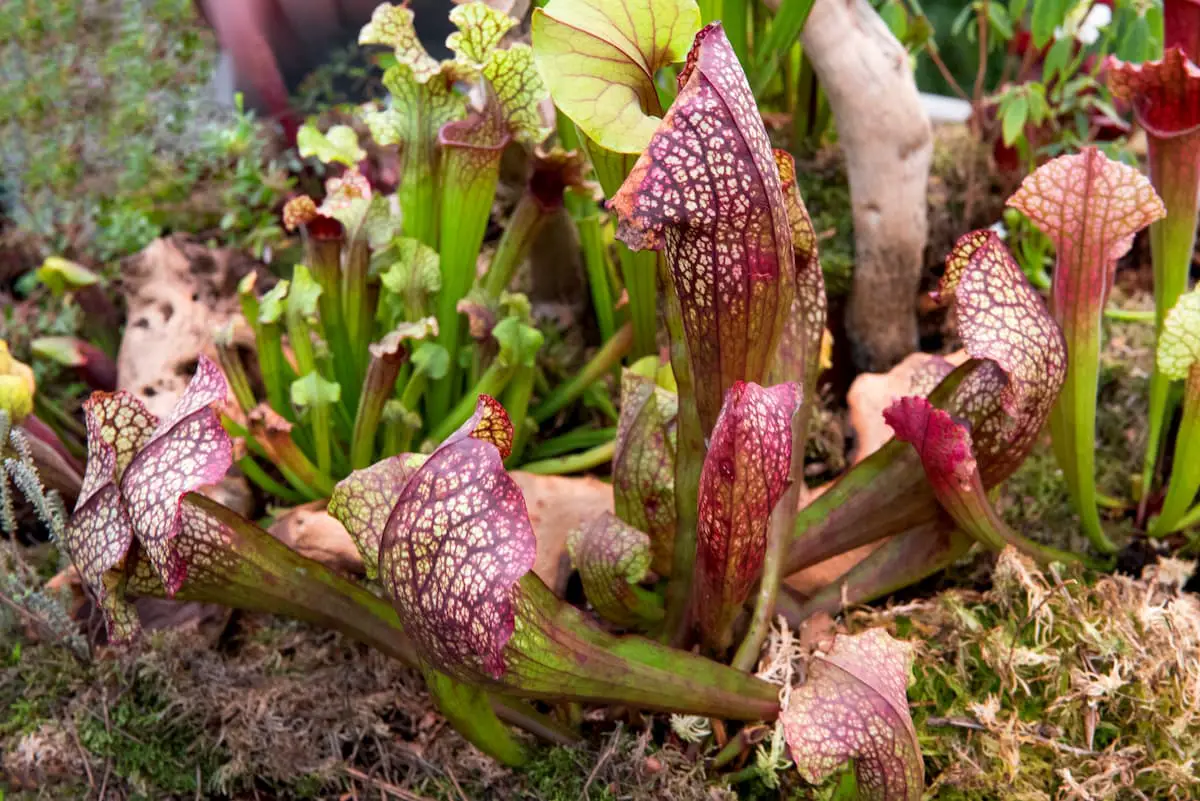There are many carnivorous plants out there, most coming from dense forest areas where their food would be plentiful. Knowing how each plant works and what they need to eat is vital to keeping them healthy, as such you may be wondering how exactly you keep your Venus Fly Trap fed with the right food.
Venus Fly Traps eat ants, fly’s, beetles, or slugs with larger creatures like tiny frogs and spiders being on the list of food as well. Indoor plants must be fed once a week, with plants that are kept outside not needing to be fed at all.
Knowing when to feed your Venus Fly Trap and what kinds of critters to feed them is vital to making sure they grow healthy.
It is more than just feeding your Venus Fly Trap that will make them grow well, having the proper soil, water and other required nutrients is vital to the plant.
Many people don’t realize that they only need to start feeding the plants once they are mature.
Here’s everything you need to know about feeding your Venus Fly Trap!
When do you need to feed them?
Many people see and understand the basics of a Venus Fly Trap, understanding that they lure small bugs into their traps and close around them.
Slowly but surely digesting the bugs over a period of time, however, something that few people realize is that the bugs are not their main source of nutrients.
Like all other plants they rely on their soil, the air, and the sun to grow properly, using bugs as a source of extra nutrients to grow larger.
Where you are keeping you Venus Fly Trap will greatly affect when you feed them, as the plant can be kept either inside or outside, as long as there is enough sunlight.

Indoor Plants
Along with ensuring there is enough sunlight shining on your Venus Fly Trap if you keep it inside all the time you will have to feed it once a week as well. It is important to note that you do not need to feed Venus Fly Traps that are still growing.
Feeding them too early can stunt their growth as the energy they would put into growing is now going to eating the bugs. Choosing the right bugs as well is important, a smaller plant would prefer small ant rather than stronger flies.
Your Venus Fly Trap will only need to be fed once a week, with the stems being removed once they have turned brown entirely.
Outdoor plants
Many people live in areas where they can safely keep their Venus Fly Traps outside throughout the year, in these areas you will never have to feed your Venus Fly Trap. Owing to their natural scent alluring the bugs that they eat you will see that your plant naturally finds food as it grows outside.
As long as your soil is good, the sun rises, and the Venus Fly Trap is not being smothered you will never have to manually feed it something to eat when they are growing outside.
Should the bugs be dead or alive?
One of the most confusing things you will face is the question of dead or alive bugs for your Venus Fly Trap. Many times people will try to capture flies or ants to feed to their Venus Fly Traps, and even many more times they will just buy bugs that are already dead.
There are dangers with each approach, feeding live bugs to you plant can be dangerous owing to the damage that they can cause. If your Venus Fly Trap is still young feeding them something like a fly could damage the traps while older plants won’t be satisfied with the smaller live bugs like ants.
As for dead bugs, the danger comes from not feeding your Venus Fly Trap fresher bugs, with some people keeping the bugs in their fridge. Forgetting to thaw out the bugs before feeding them to your Venus Fly Trap causing some damage to be done to a trap that would have worked perfectly fine for a few more captures.
Choosing dead or alive bugs is all about your personal preference and what you know you will be able to continually feed to it.
What are the types of bugs I should be feeding them?
Few people that have never owned a Venus Fly Trap will be aware of the variety of bugs that can be fed to your plants.
Many believing that the plants really do live only off of flies, luckily this is not true, and Venus Fly Traps subsist of a large variety of bugs that can be pests both in the house and in the yard.
- Ants: The perfect thing to use when testing if your Venus Fly Trap is ready to eat anything are small house ants. These small ants won’t harm your plant and will let you see if it is ready or not to start eating.
- Flies: Once your Venus Fly Trap has starter maturing and the traps are much larger than the ants you are feeding it then you will start moving towards other smaller bugs that you can feed them. Many times fly’s are perfect for when your Venus Fly Trap starts moving towards larger insects.
- Spiders: Possibly one of the most surprising things that Venus Fly Traps love to eat are spiders. Because they often crawl around on the level that these plants grow at you will find that sometimes spiders are naturally caught by your plant, which is much easier than trying to feed a live spider to a Venus Fly Trap.
- Beetles: A bug that is often loved for its strength, beetles are also great for feeding to your Venus Fly Trap once it becomes a lot larger and capable of eating anything that fits. These are hardier bugs that provide a lot more for you plant to feed on as they are slightly larger.
How do you feed dead bugs to a Venus Fly Trap?
While feeding a live bug is as simple as dropping it into one of the traps and letting it try and wriggle free it is not the same for dead bugs. This is owing to the plant requiring the hairs inside the trap to be brushed even once they are closed to stimulate digestion.
When you have dropped your dead bug into the Venus Fly Trap and it has started closing all you will need to do is get a toothpick or something similar, tickling the hairs until the trap seals shut.
Once the trap has sealed shut, making sure that the bug is not so big that it forces it open slightly, the Venus Fly Trap will start eating the bug.
If proper digestion is not started or the bug is so large that the trap stays open slightly the trap and stem will start to rot. Eventually falling away and it could end up damaging the Venus Fly Trap significantly. Opening up the plant to rot or molds that may even damage this very hardy plant.
Final Thoughts on What Does a Venus Fly Trap Plant Eat
There are many ways that you can feed your Venus Fly Trap and learning what is the best way will ensure that you don’t need to worry about damaging the plant.
Ensuring that there is enough traps and that the traps are the perfect size for feeding will ensure that your Venus Fly Trap lives a lot longer.
Just be sure you don’t feed your Venus Fly Trap something that is too big and that may damage the trap from the inside!



Leave a Reply